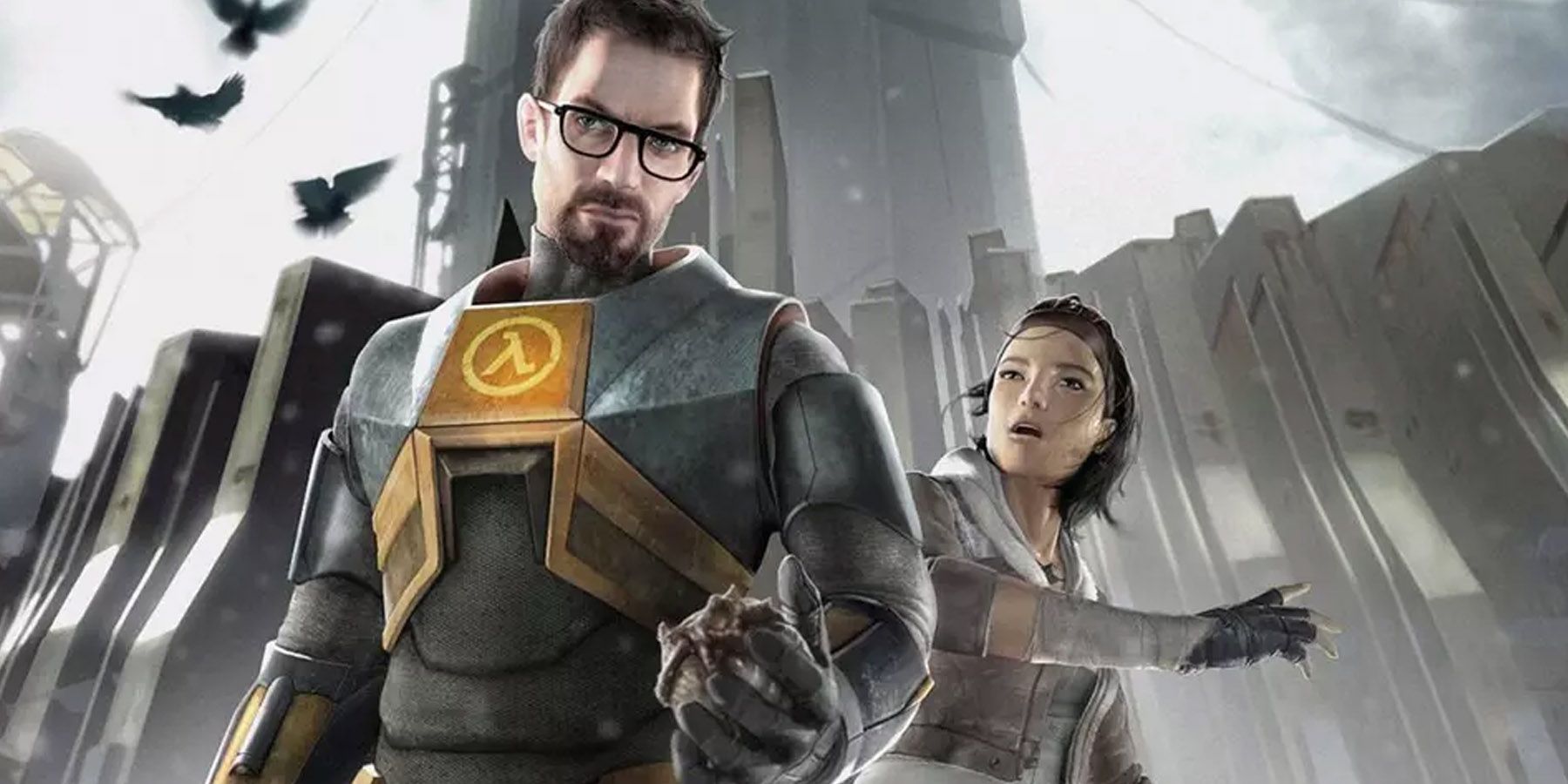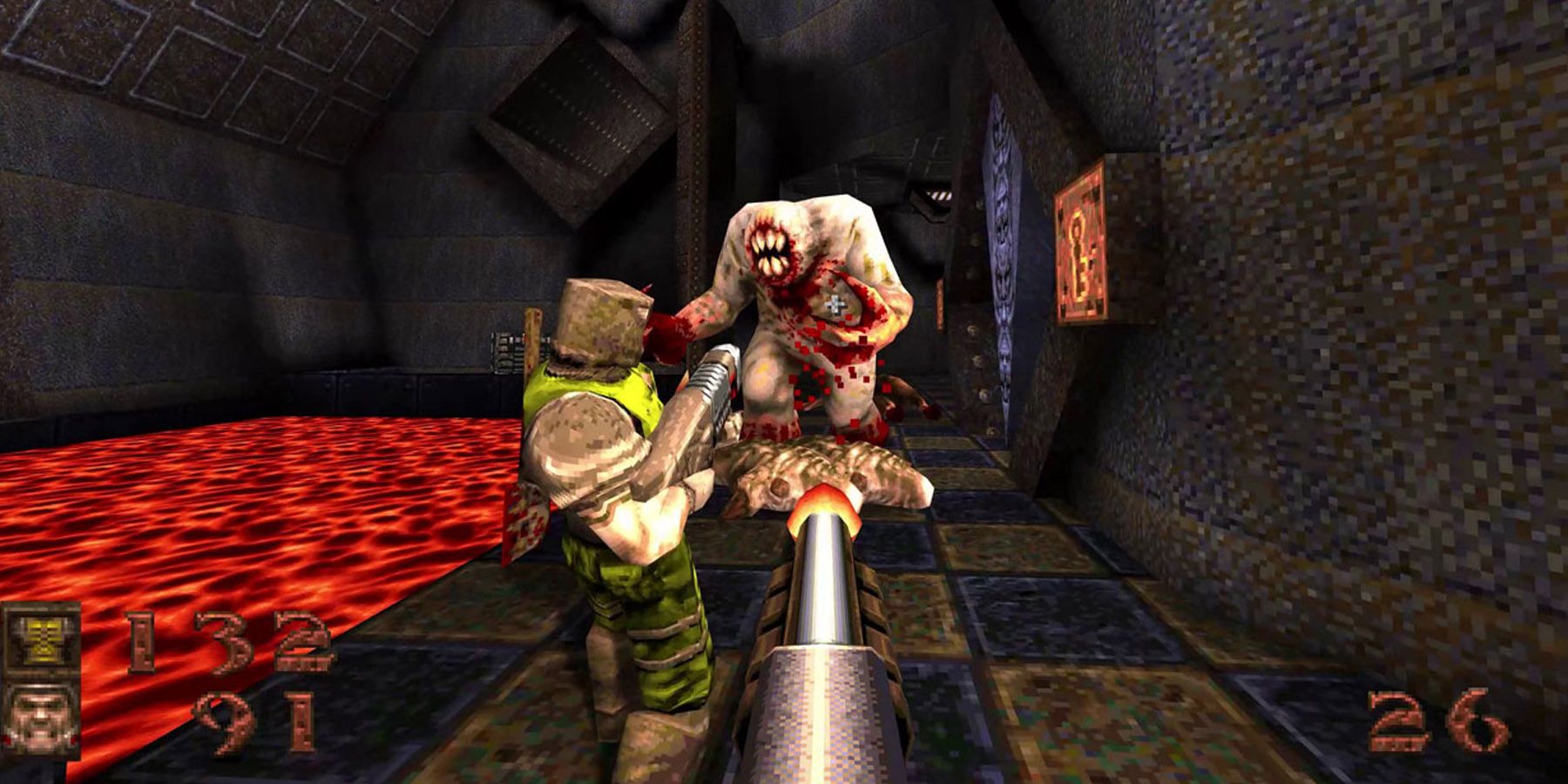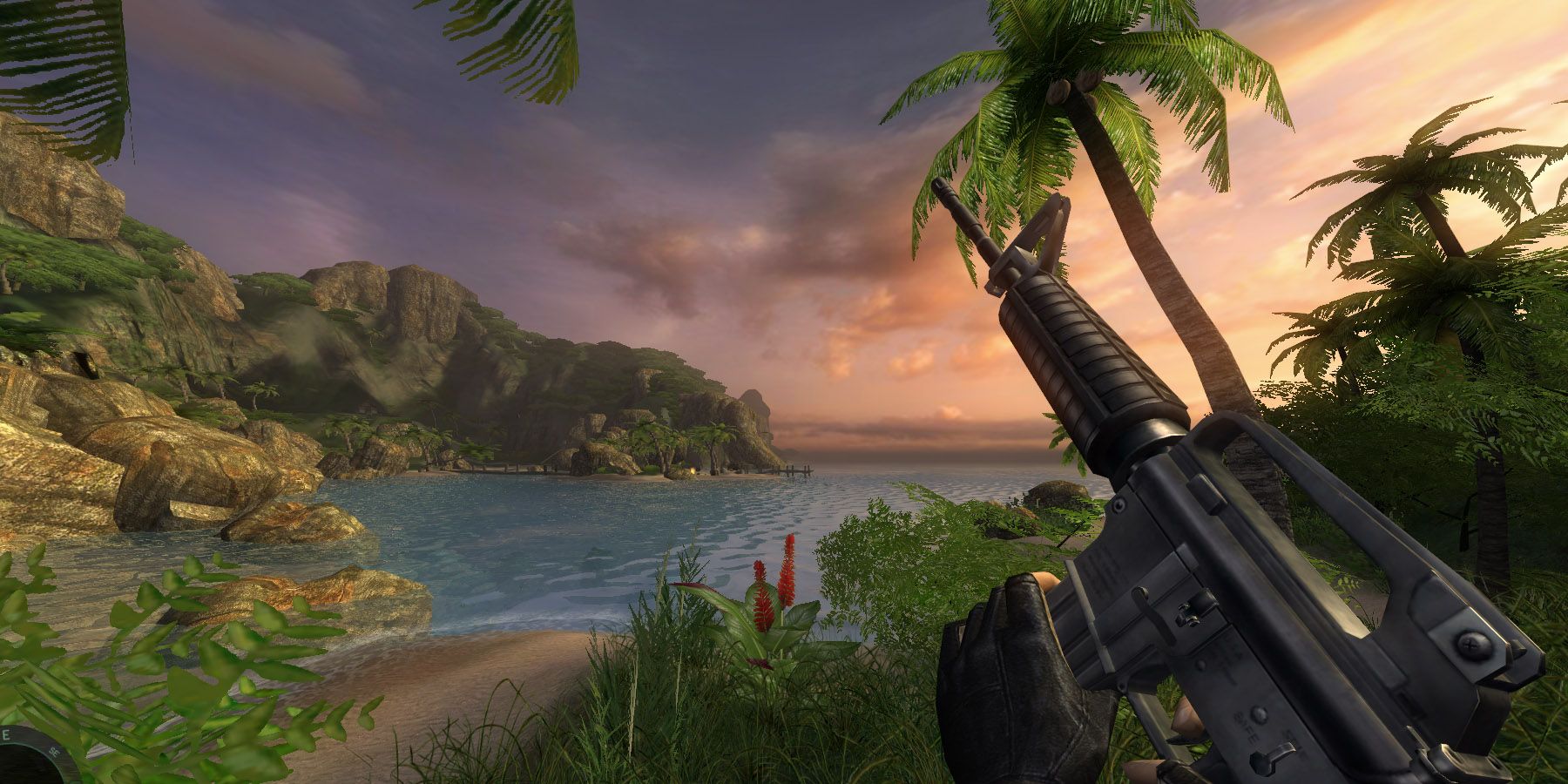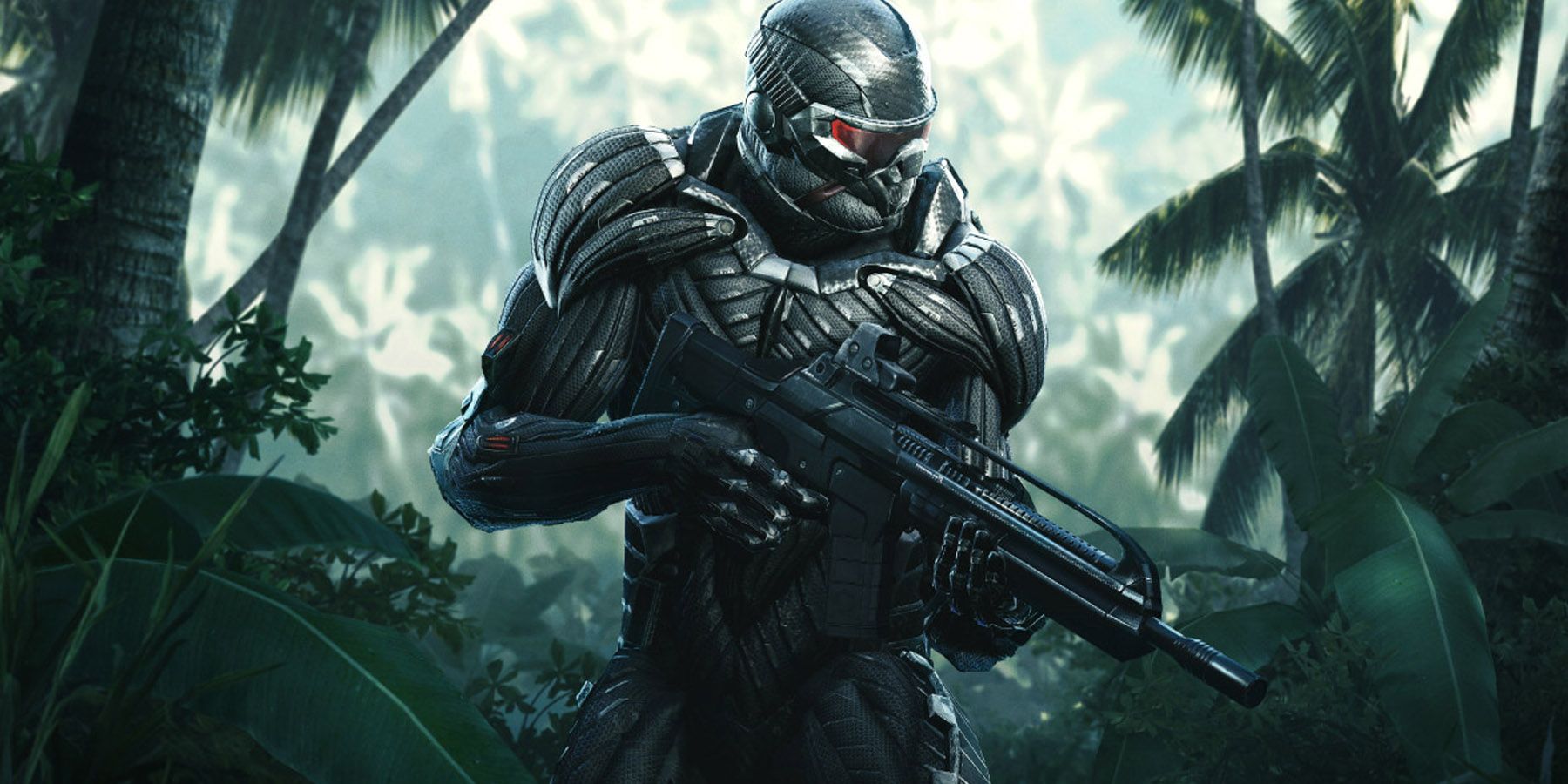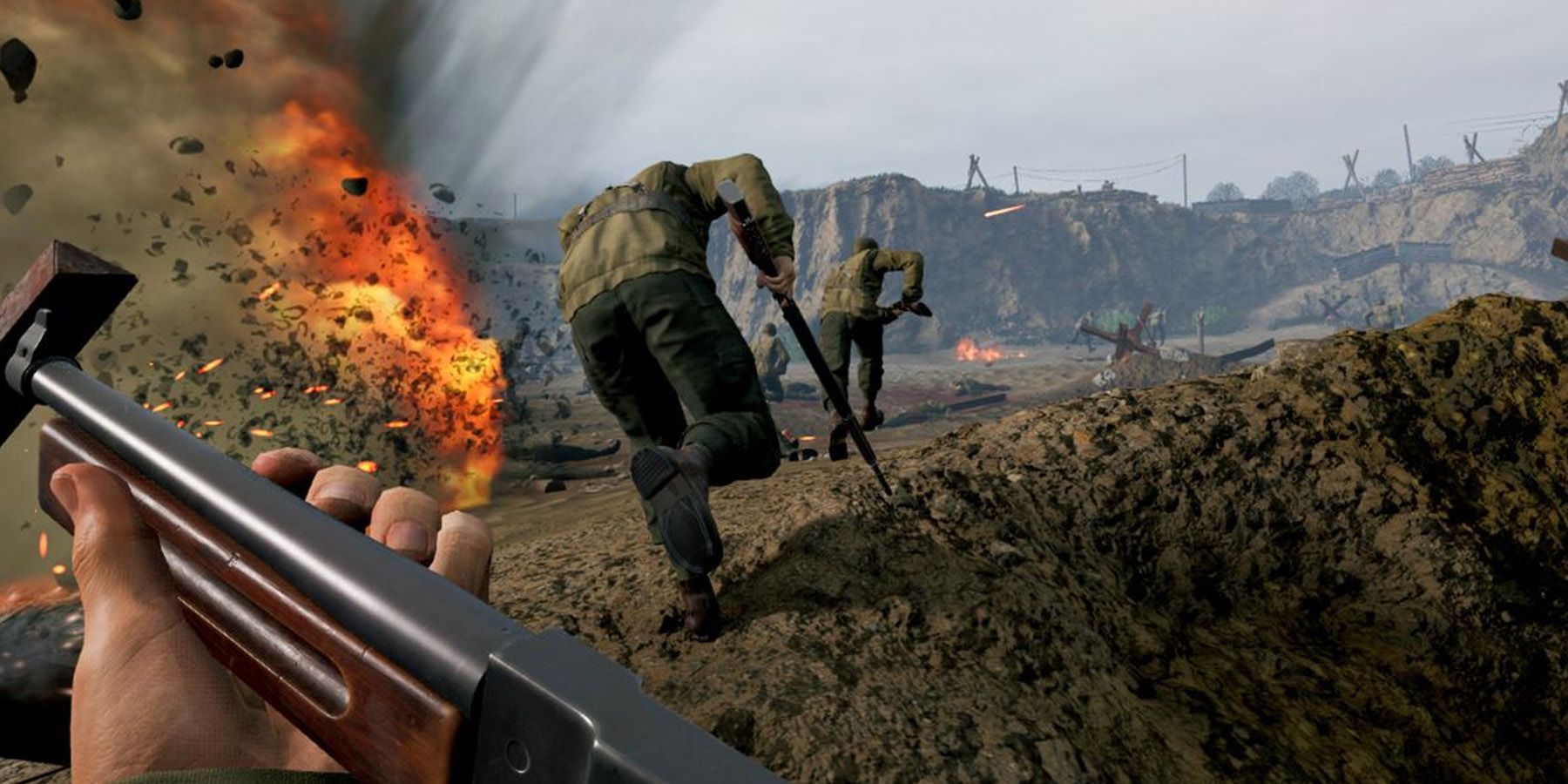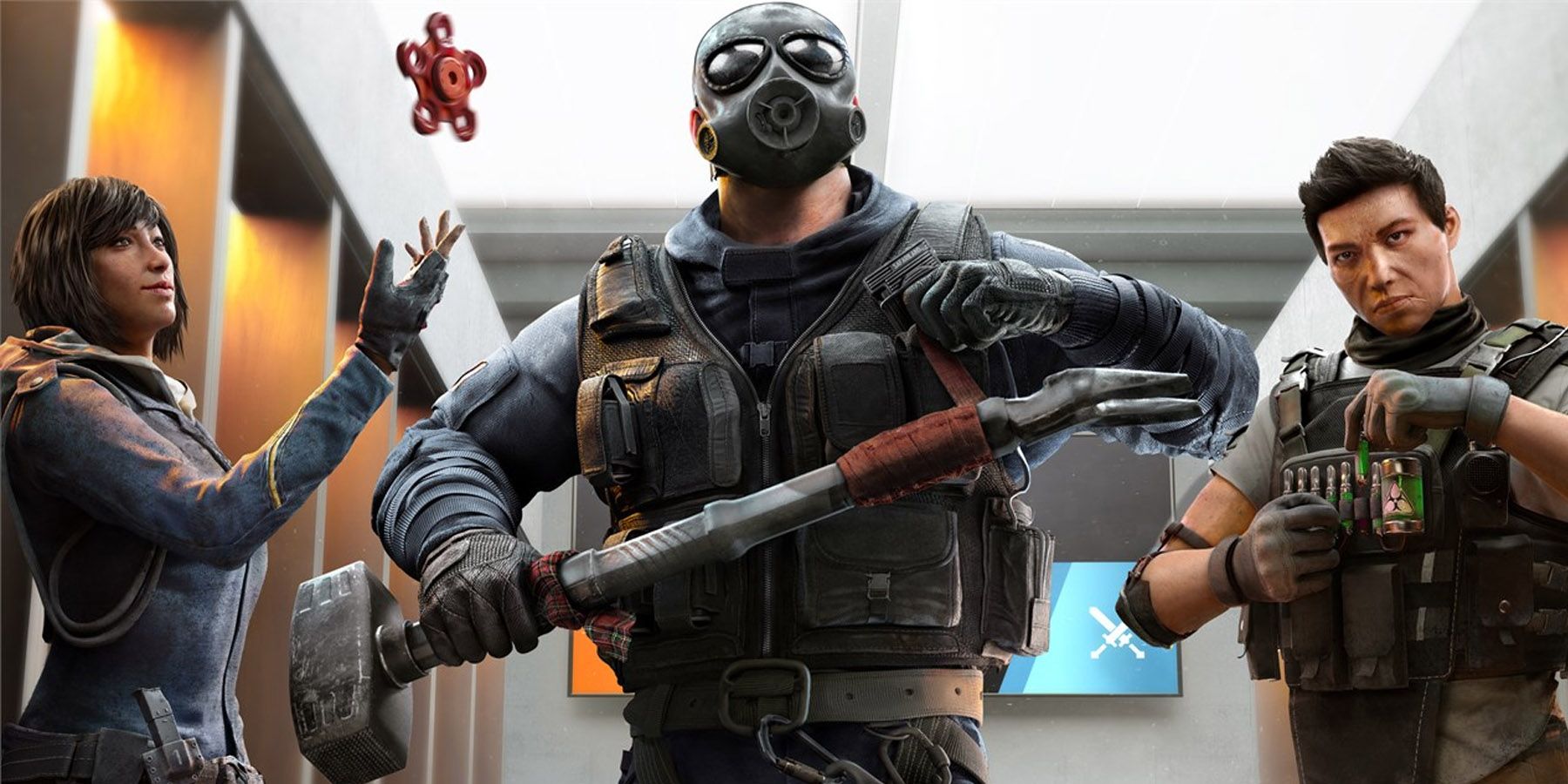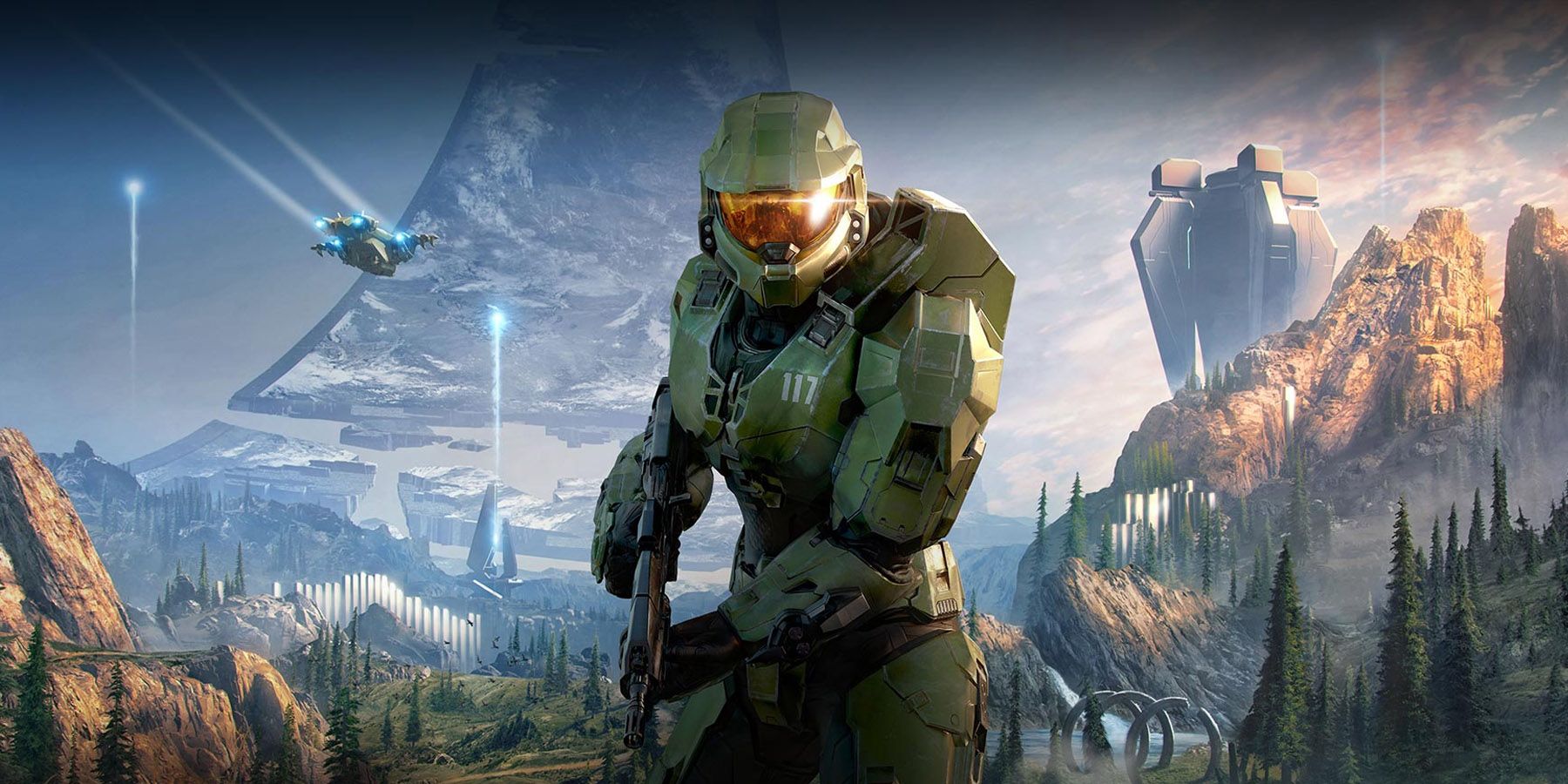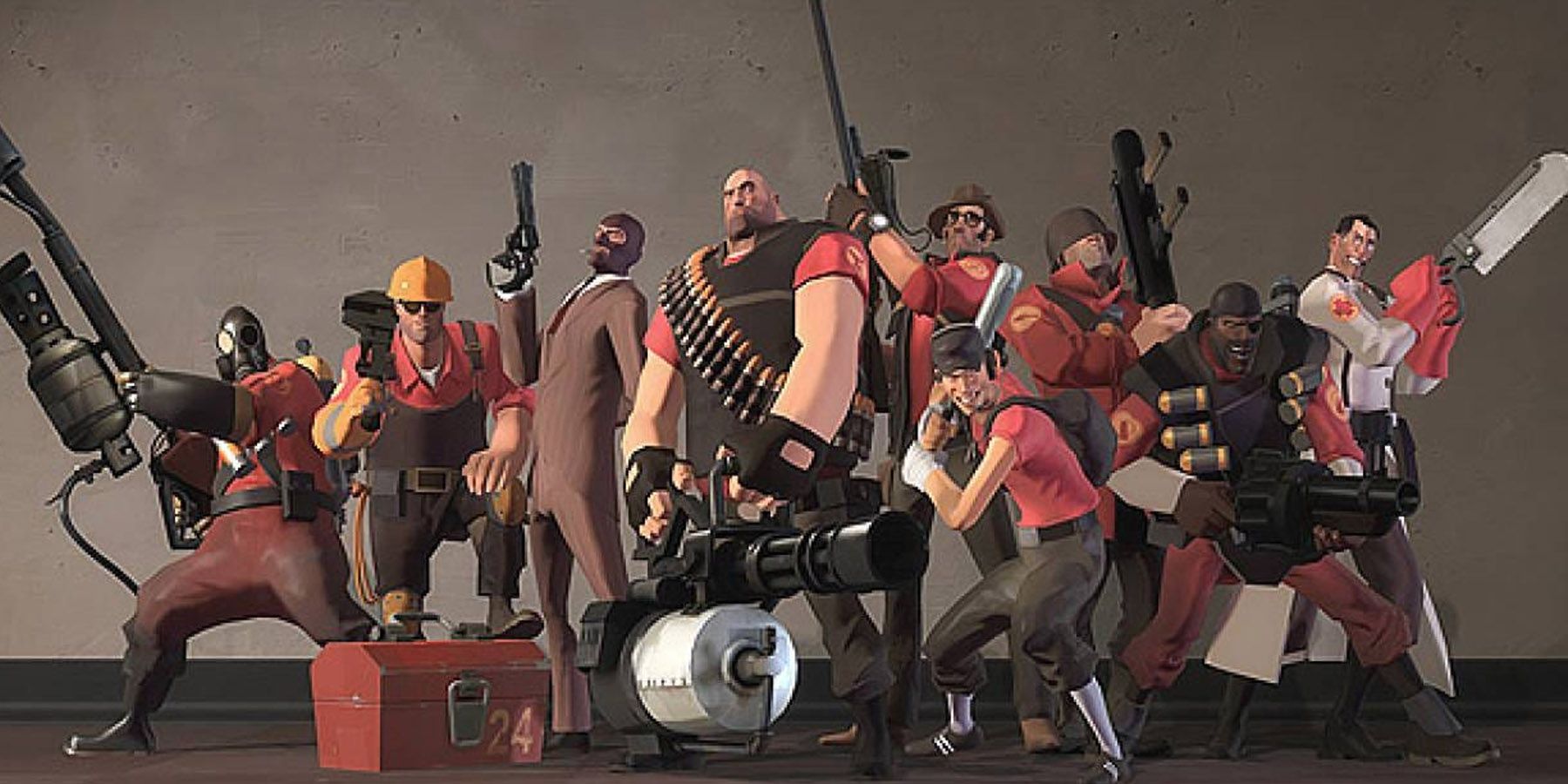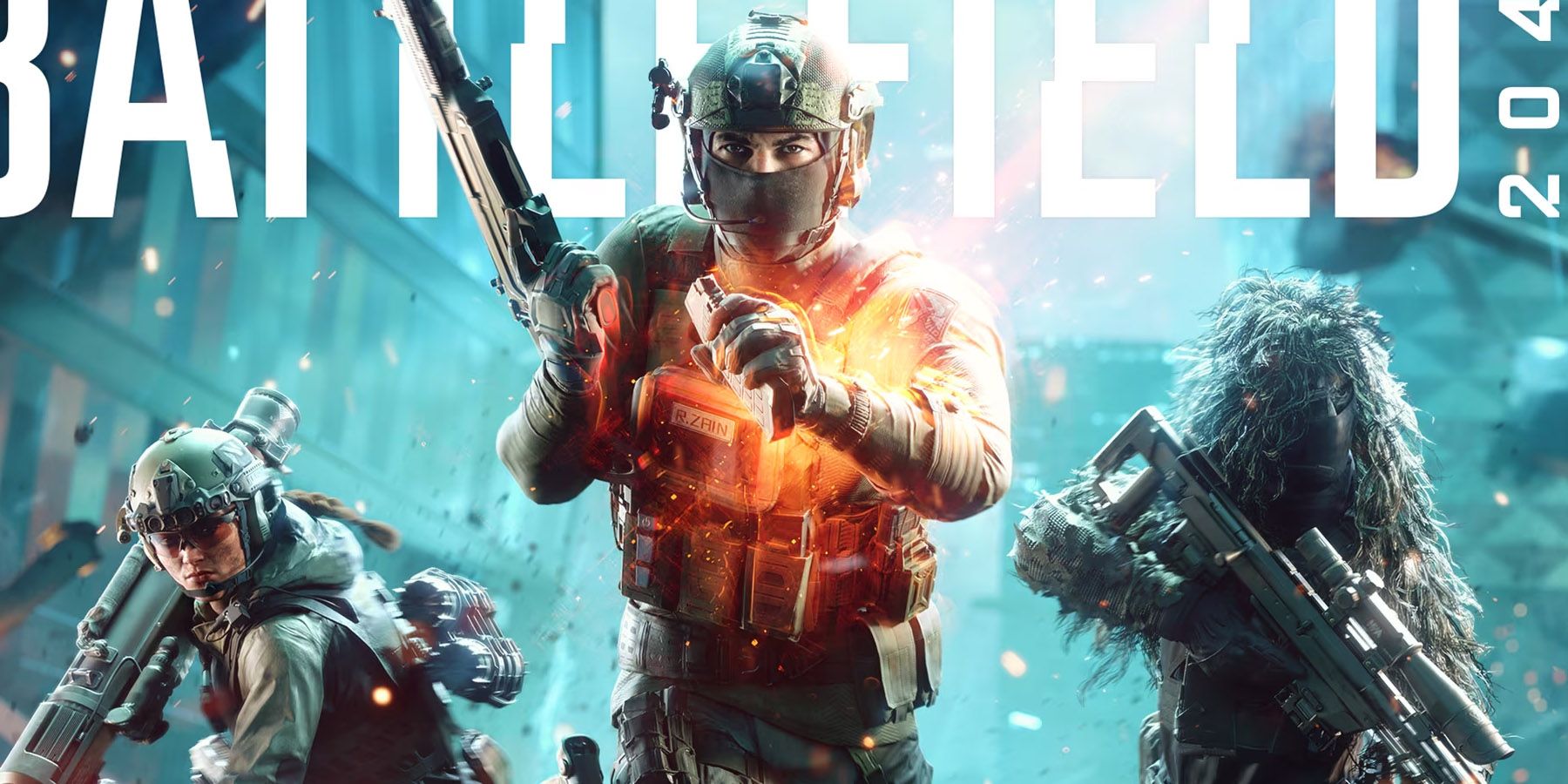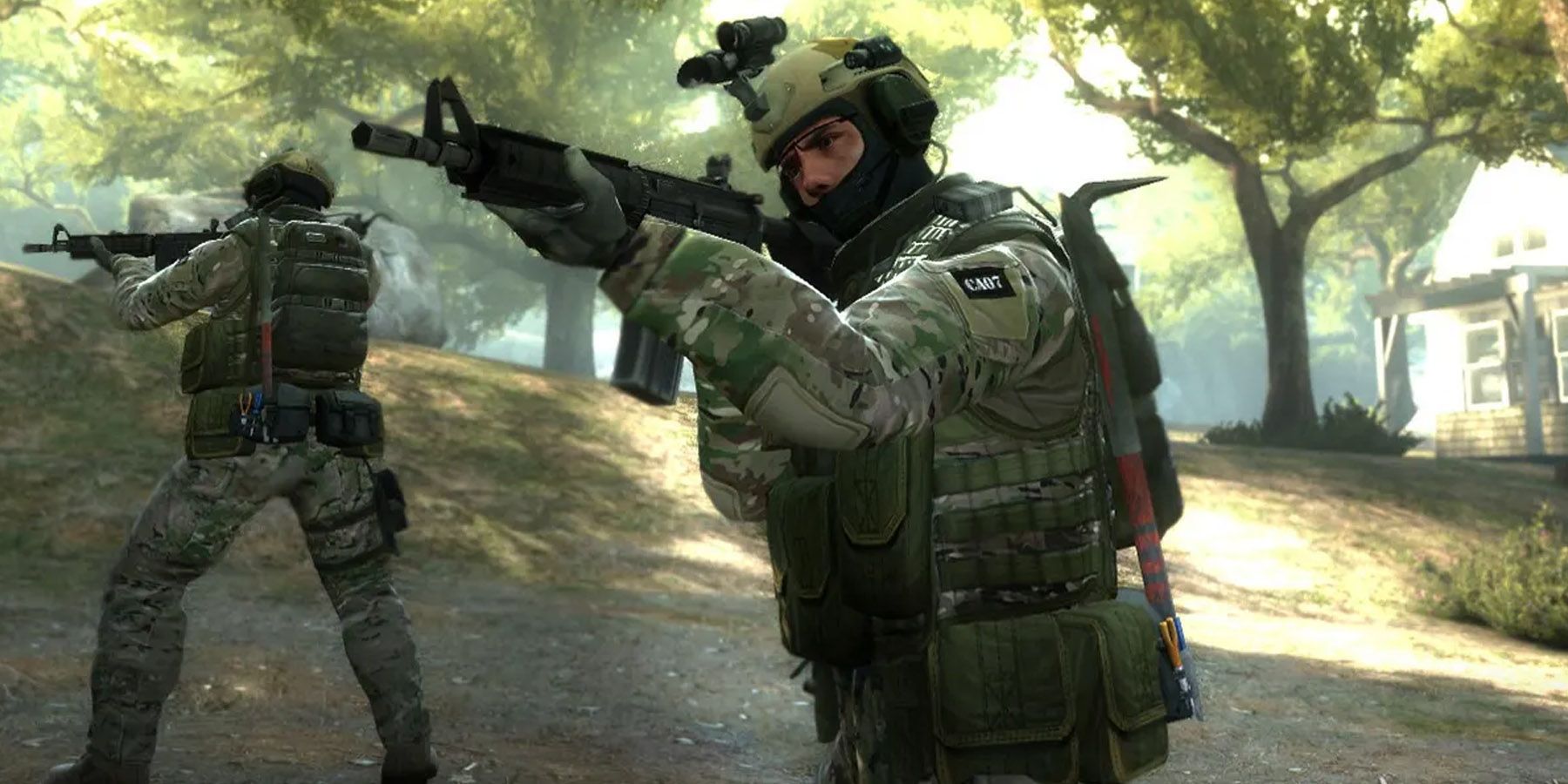Best FPS Franchises Better Than Call Of Duty

[ad_1]
Highlights
- Half-Life, Quake, and Far Cry offer unique and revolutionary gameplay experiences that can captivate Call of Duty fans looking for something different.
- Crysis, Medal of Honor, and Rainbow Six provide immersive worlds, intense combat, and strategic gameplay that set them apart from the Call of Duty franchise.
- Halo, Team Fortress, Battlefield, and Counter-Strike have established themselves as major competitors to Call of Duty, offering deep storylines, engaging gameplay, and massive multiplayer options.
First-person shooter fans look at Call of Duty as one of the poster children of the genre, with the FPS offering single-player campaigns packed with riveting setpieces and a multiplayer component offering hundreds of hours worth of gameplay. However, regarding the best franchises in the FPS genre, the vast scenarios explored in Call of Duty are far from what other series can offer fans.
For Call of Dutyenthusiasts looking for a new experience to dip their toes in, some FPS franchises may be worth looking into. Aside from direct competition, other Call of Duty alternatives offer unique takes on FPS that can undoubtedly pique fans’ interest.
10 Half-Life
Half-Life
- Platform(s)
- PC, PS2, Linux, macOS
- Released
- November 19, 1998
- Developer(s)
- Valve
- Genre(s)
- Shooter
Compared to older FPS titles, Half-Life has retained quite a following due to its revolutionary nature. Starring the silent protagonist Gordon Freeman, his work as a theoretical physicist at the Black Mesa Research Facility is interrupted by a horrific accident that opens a portal to another dimension.
On top of a strong sci-fi horror narrative that aged well with the graphics of the major games, its approach to gameplay influenced the growth of the FPS genre. Narrative-wise, Half-Life switched things up in the genre by including scripted cutscenes and splitting the game into chapters to better immerse players in the world. Environmental puzzles go hand-in-hand with combat, giving players back in 1998 the feeling that the world was moving with them as they made progress in the story.
9 Quake
Quake
- Platform(s)
- PC, Switch, Nintendo 64, PS4, PS5, Xbox One, Xbox Series X, Xbox Series S, Sega Saturn
- Released
- May 22, 1996
- Developer(s)
- id Software
- Genre(s)
- First-Person Shooter
Despite the first Quake game being released in 1996, the title made a mark in the FPS genre as being one of the first titles to ever use complete 3D environments and polygonal models. Its premises are different depending on the title, with the first storyline involving players traveling across dimensions to stop a threat called “Quake” while the second game explores humanity’s war against aliens called the Strogg.
Combined with fast-paced gameplay and gory visuals, Quake titles facilitated multiplayer modes where players took advantage of revolutionary mechanics such as strafe jumping, bunny hopping, and even rocket jumping. While 2022’s Quake Champions has to compete with FPS titles in an oversaturated genre, its arena shooter premise remains attractive for players who want a quick match.
8 Far Cry
Far Cry
- Platform(s)
- PC, PS3, Xbox (Original), Xbox 360
- Released
- March 23, 2004
- Developer(s)
- Crytek
- Genre(s)
- FPS, Open-World
Compared to other FPS franchises, Far Cry sets itself apart for featuring standalone releases, never having a shared narrative premise. Instead, players explore a vast open wilderness populated with wild animals and various factions as they traverse a plot often involving parties that control the region. The first Far Cry game in 2004 involves a retired soldier saving a journalist in a mysterious Pacific archipelago, whereas the recent Far Cry 6 in 2021 involves the players in a civil war in a Cuba-inspired island nation.
Earning Far Cry its critical acclaim is its open-world gameplay that began with the second entry, where players have to fight enemies and survive through features such as crafting and hunting. They’re often free to explore the world as they wish, with quests often affecting how factions perceive them in the long term.
7 Crysis
Although graphics processors today can run almost any game in their ultra settings, the adage “But can it run Crysis?” was both a meme and a legitimate benchmark concern back in the day. Considered one of the best works of the Crytek team, Crysis involves the adventures of nanosuit-clad soldiers in their missions to save the world from various threats. While the game heavily involves traditional FPS gameplay seen today, the first Crysis game in 2007 was critically acclaimed for features it introduced to the genre.
In the games’ sprawling open worlds, players can approach combat against intelligent AI through a variety of means. Players can wield and customize futuristic military weapons in real time, and may even use special modes in their nanosuits to facilitate different gameplay styles. Most importantly, Crysis sets the bar in combining open-world physics with graphically intensive environments, paving the way for extremely immersive worlds.
6 Medal Of Honor
While Call of Duty established itself as a prominent storyteller of large war stories, it’s Medal of Honor that jumpstarted the genre. Its first release in 1999 was a revolutionary leap in both FPS tech and storytelling at the time, with the original title assigning players to missions of the Office of Strategic Services near the end of World War 2.
Subsequent Medal of Honor entries followed this trend across the years. Instead of relying on modern action stories, Medal of Honor sets itself apart from other franchises in its accurate depiction of older guns and recreation of real-life battles across its games. In turn, older Medal of Honor titles remain entertaining to play, especially with its older hardware somehow fitting its reliance on historical settings.
5 Rainbow Six
Rainbow Six: Siege
- Platform(s)
- PS4, PS5, Xbox One, Xbox Series X, Xbox Series S, Amazon Luna, Stadia, PC
- Released
- December 1, 2015
- Developer(s)
- Ubisoft Montreal
- Genre(s)
- Shooter
Special operatives remain as some of the world’s most skilled marksmen, with Rainbow Six emphasizing team play and tactical prowess to outwit opponents. While every game is set in a different locale, each Rainbow Six title since its 1998 launch follows the exploits of the eponymous international task force as they use precision gunplay, special gadgets, and group tactics to survive in hostile territory. Planning is paramount in the games, as intelligent AI actively reacts to players who use fragile characters.
However, Rainbow Six mechanics also provide numerous tactical options to players such as real-time commands, realistic sounds, and destructible environments. This depth of gameplay is seen in the co-op components of Rainbow Six Siege, where unlockable characters have gadgets designed to scout areas, secure locations, and barricade points of interest.
4 Halo
Halo: Combat Evolved
- Platform(s)
- PC, Xbox (Original), Xbox 360, Xbox One
- Released
- November 15, 2001
- Developer(s)
- Bungie, Gearbox Software
- Genre(s)
- FPS
Science fiction fans look at Halo as perhaps the most established FPS franchise in the genre, with Bungie’s brainchild helping Microsoft’s Xbox product line become a dominating force in the console market. Starring the Master Chief in 2001’s Halo: Combat Evolved, the rest of the Halo franchise revolves around the United Nations Space Command and its bid to protect humanity against threats ranging from the Forerunners, the Covenant, and even the Flood.
Games in the Halo franchise boast a semi-open-world setting, allowing Master Chief to navigate various biomes and use a variety of futuristic weapons to get an edge against various alien threats. On top of its riveting narrative and personal stories, Halo also cultivated quite the active multiplayer scene, with Combat Evolved’sco-op functionalities becoming so popular that they remain live to this day.
3 Team Fortress
Team Fortress
- Platform(s)
- PC
- Released
- April 7, 1999
- Developer(s)
- Valve
- Genre(s)
- FPS
While the likes of Overwatch, Apex Legends, and Valorant popularized the hero shooter, their predecessor, the Team Fortress franchise, have perhaps established the genre. With acclaim specifically tied to Team Fortress 2, the franchise breaks new ground in team-based gameplay where players don’t create characters but instead use characters with established loadouts. This emphasized fast-paced gameplay and barring any need for in-depth progression.
Although the aforementioned titles would branch out to include unique mechanics in their respective sub-genres, Team Fortress introduced a majority of the gameplay mechanics in hero shooters that are appreciated today. These include limited weapon loadouts, statistics about each character or class, and achievements involving different gameplay approaches.
2 Battlefield
Battlefield 2042
- Platform(s)
- PC, PS4, PS5, Xbox One, Xbox Series S, Xbox Series X
- Released
- November 19, 2021
- Genre(s)
- First-Person Shooter
When it comes to Call of Duty contenders, none come close to the Battlefield franchise in terms of deep storylines, engaging gameplay, and massive multiplayer options. Since the first Battlefield game was released in 2002, the series placed a heavy focus on cooperative gameplay. As with other FPS titles, Battlefield gives players access to a wide range of historically accurate weapons to be used in a variety of story missions and multiplayer modes.
Entries in the Battlefield franchise explore both historical events and futuristic wartime situations, all offering scenarios where players become a part of a massive contingent of soldiers. Recent entries such as Battlefield 2042 being able to support up to 128-player matches truly emulates a battlefield experience.
1 Counter-Strike
Counter-Strike 2
- Platform(s)
- PC
- Released
- September 27, 2023
- Developer(s)
- Valve
- Genre(s)
- FPS
Despite starting as a mere Half-Life mod, Counter-Strike became one of the world’s largest multiplayer FPS franchises of all time. Across its entries ranging from the first Counter-Strike in 1998 up to releases such as Counter-Strike: Global Offensive and Counter-Strike 2, the series follows gameplay that may have defined the major mechanics of fast and loose cooperative shooters. Its main premise is simple: players are grouped among Terrorists who have to plant a bomb and Counter-Terrorists who have to defuse it.
However, this mechanical loop introduced not just unique gameplay modes but also some genre-defining features that separate Counter-Strikefrom its peers to this day. Aside from pre-round timed opportunities to purchase gears and loadouts, an emphasis on tight-knit maps with multiple choke points encourages tactical gameplay that results in massive replayability.
Source link
